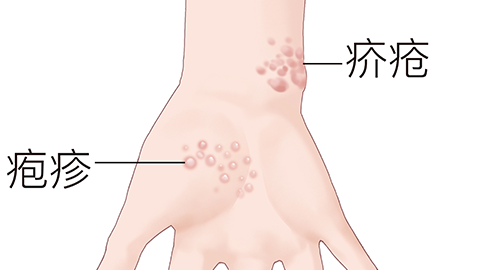What does scabies look like?
Generally, scabies is a contagious skin disease caused by the parasitism of scabies mites in the epidermal layer of human skin. Common symptoms include red papules or small blisters appearing on thin and wrinkled areas of the skin. If discomfort symptoms occur, it is recommended to seek timely treatment at a regular hospital. Detailed analysis is as follows:

During a scabies outbreak, the skin will exhibit various characteristic manifestations. Initially, light red papules or blisters commonly appear on thin and tender areas of skin such as between the fingers, inner wrists, armpits, groin, and external genital organs. The papules are similar in size to pinheads or grains of rice, while the blisters are transparent or semi-transparent. In some areas, grayish-white, winding thread-like markings approximately several millimeters in length can be seen; these are tunnels burrowed by the mites within the skin. Intense itching accompanies these symptoms, especially worsening at night. Repeated scratching may lead to skin damage, scabbing, or even secondary infections with pustules and exudate, and severe cases may develop eczema-like changes or thickened skin.
In daily life, it is important to seek medical attention promptly upon noticing similar symptoms to confirm diagnosis and avoid close contact with others or sharing clothes and bedding. Once diagnosed, follow medical advice to use targeted medications and thoroughly disinfect your living environment and personal items—for example, washing clothing next to the skin with boiling water and exposing bedding to direct sunlight. When experiencing itching, avoid scratching as much as possible and use anti-itch medications as directed by your doctor to prevent skin damage and subsequent infections. If family members or cohabitants develop identical symptoms, they should also undergo examination and treatment simultaneously to avoid cross-infection.





